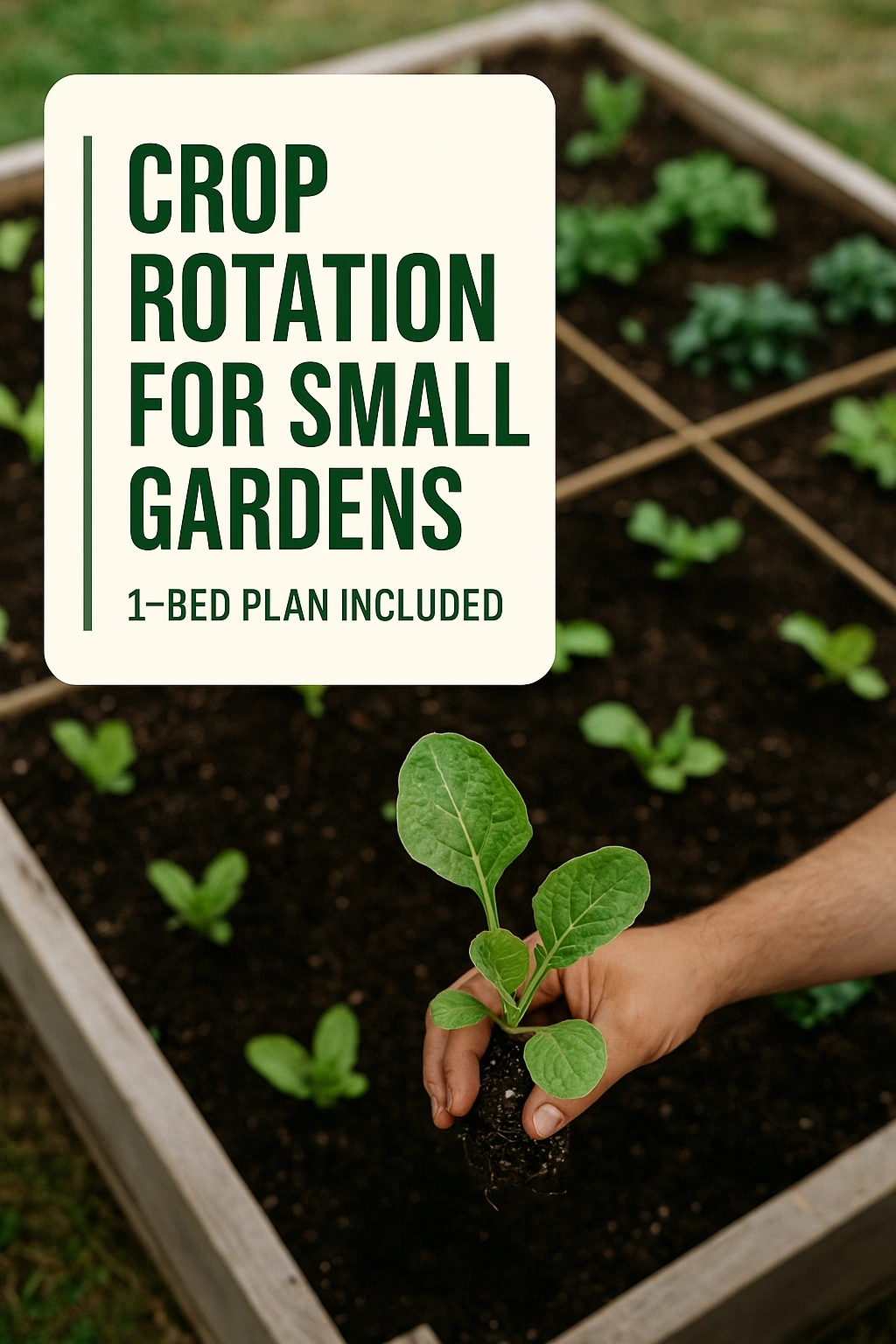
Crop rotation is a vital practice for maintaining soil health and maximizing yield in small gardens. By systematically changing the types of crops grown in each plot, gardeners can enhance nutrient availability, prevent pest accumulation, and reduce diseases. This article will delve into the principles of crop rotation, the benefits it offers, and provide a practical one-bed rotation plan tailored for small garden spaces.
What is Crop Rotation?
Crop rotation involves the practice of growing different crops in the same area across a sequence of seasons. This method contrasts with monoculture, where the same plant is cultivated repeatedly in the same location. Crop rotation is based on the understanding that different plants have varying nutrient requirements and pest profiles.
The Benefits of Crop Rotation
Implementing crop rotation in a small garden is beneficial for several reasons. These advantages can lead to healthier plants and improved harvests.
Soil Health Improvement
Rotating crops helps maintain soil fertility. Different plants contribute and extract various nutrients from the soil. For instance, legumes can fix nitrogen, enriching the soil for subsequent crops. Over time, this practice leads to healthier soil structure and increased microbial activity.
Pest and Disease Control
Many pests and diseases are crop-specific. By rotating crops, you disrupt the life cycles of these pests, reducing their population and preventing outbreaks. For example, planting tomatoes in one bed followed by a rotation with carrots can minimize the risk of soil-borne diseases affecting both plants.
Weed Management
Weeds thrive when they face consistent conditions. Rotating crops can change the environment, making it less hospitable for weed growth. Additionally, different crops can outcompete certain weeds, further reducing their prevalence.
Essential Principles of Crop Rotation
To effectively implement crop rotation, consider these foundational principles that will enhance your gardening success.
Rotation Cycles
A typical rotation cycle may span three to four years, allowing adequate time for soil recovery and pest disruption. Each year, select a different group of crops to plant in each bed. This ensures a balanced nutrient uptake and minimizes the risk of disease.
Grouping Plants
When planning your crop rotation, group plants based on their family and nutrient needs. Common groupings include:
- Legumes: Beans, peas, and lentils.
- Brassicas: Cabbage, broccoli, and kale.
- Root Vegetables: Carrots, beets, and radishes.
- Fruiting Plants: Tomatoes, peppers, and eggplants.
A One-Bed Crop Rotation Plan
For a small garden, a simple one-bed rotation plan can be highly effective. Below is a seasonal plan that spans four years, focusing on crops that complement each other.
Year 1: Legumes
Start with legumes, such as peas or beans. These plants will enrich the soil with nitrogen, benefiting subsequent crops. They can be sown early in the season and harvested in late spring or early summer.
Year 2: Brassicas
In the second year, follow with brassicas like cabbage or broccoli. These crops benefit from the nitrogen left behind by the legumes and thrive in the nutrient-rich soil. Plant them early in the spring for a summer harvest.
Year 3: Root Vegetables
In the third year, plant root vegetables such as carrots or beets. These plants will utilize the deeper nutrients in the soil and require less nitrogen, allowing the soil to balance its nutrient levels.
Year 4: Fruiting Plants
Finally, in the fourth year, plant fruiting plants like tomatoes or peppers. These crops require more nutrients and will benefit from the previous years’ rotations. Ensure they receive adequate sunlight and water for optimal growth.
FAQs about Crop Rotation for Small Gardens
What are the best crops for beginners to rotate?
For beginners, it’s advisable to start with easy-to-grow crops such as beans, lettuce, and radishes. These plants are generally resilient and offer quick feedback on your gardening efforts.
How often should I rotate my crops?
Crop rotation should ideally occur every year, but a three to four-year rotation cycle is recommended for more significant benefits. This allows time for soil recovery and pest management.
Can I use cover crops in my rotation plan?
Yes, incorporating cover crops like clover or rye can enhance soil health during the off-season. They help prevent erosion, improve soil structure, and add organic matter when tilled under.
Is it necessary to rotate all crops?
While it is not strictly necessary to rotate every crop, doing so can significantly reduce pest and disease risks. Some perennial plants, like asparagus, can remain in place for several years, but rotate annuals whenever possible.
Conclusion
Crop rotation is an essential practice for small garden success. By following a structured plan, gardeners can improve soil health, manage pests, and ultimately enhance their yields. Implementing the one-bed rotation plan outlined above can provide a solid foundation for achieving a thriving garden. As you gain more experience, feel free to adapt and expand your crop rotation strategies to suit your specific gardening goals.
